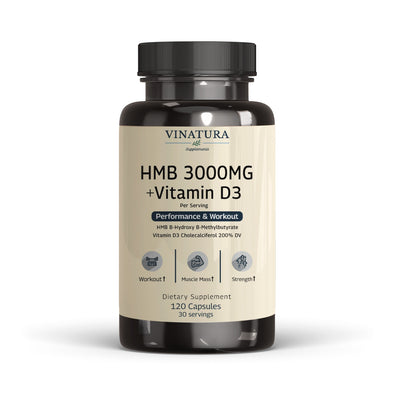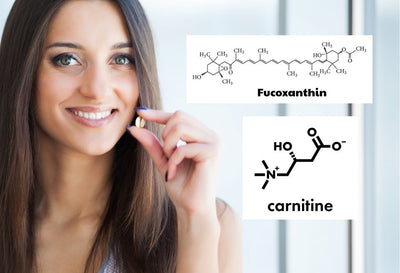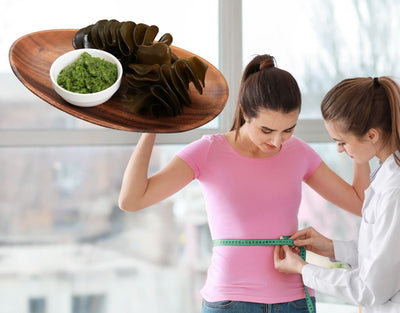
Why Doesn't Creatine Dissolve? How To Dissolve Creatine
How to dissolve creatine completely and quickly is something that many people are interested in. Because this is the way to ensure that your body absorbs this nutrient optimally, bringing the highest efficiency during training and recovery. In addition, dissolving creatine properly helps to limit the situation of creatine clumping, making it difficult for users to digest. Immediately following, the article will delve into each simple and effective method of dissolving creatine, helping you maximize the potential of this supplement.
Before exploring further, please read the disclaimer located at the end of this webpage.
Key Takeaways
- Creatine not dissolving may be due to water temperature being too cold, not shaking/stirring the powder thoroughly, unsuitable type of creatine, etc.
- The appropriate way to mix creatine is to choose warm water or acidic fruit juice, stir/shake vigorously and use it all at once, to avoid leaving any leftovers.
- If you cannot mix creatine powder, you can consider choosing the form of tablets/capsules from a reputable brand because the content has been carefully researched.
Why Doesn't Creatine Dissolve?
Curious about why creatine doesn’t dissolve in water or whey, I browsed through various topics on Quora and came across a lively discussion around the question: “Why is my creatine monohydrate not dissolving in water or protein shake?”.*

Below is a summary of some noteworthy opinions shared by the community.
Creatine is an osmotic active supplement, often used to increase muscle strength and endurance. Therefore, if you want your body to absorb creatine well, you must definitely drink enough water.
However, some people feel extremely uncomfortable even though they drink enough water, perhaps because the creatine has not been completely dissolved.* So, is the reason because the creatine supplement you are using cannot be dissolved or because you are using it incorrectly?
Below are the reasons why creatine cannot dissolve completely in the body:
- Water temperature: Many people find that their body feels more comfortable after taking creatine with warm water instead of normal or cold water.* This can be explained by the fact that cold water slows down the process of creatine dissolving in water, so it becomes even more difficult to dissolve when entering the body. Therefore, discomfort occurs after taking creatine even though you have drunk the recommended amount of water.
- Dissolution technique: There are many ways to dissolve creatine in solution such as stirring, shaking, mixing, etc. Each method has its own advantages and limitations, as long as you use the most suitable and convenient method for you. However, many people find that shaking creatine in water is the way to dissolve the powder quickly and completely.*
- Type of liquid to mix creatine: Besides diluting with water, many people also choose to mix it with fruit juice to make it easier to drink. In fact, this is quite effective, not only changing the taste but also improving the solubility. Because creatine is a substance that can dissolve well in acidic liquids. However, you should not apply this method often because the sugar content in fruit juice is quite high, which can affect your health.
- Type of creatine: Of course, fine powdered creatine will dissolve better in water than granular or large pill creatine.
- Some external conditions: If you store creatine incorrectly, the product can easily become damp and lumpy, making it more difficult to dissolve later.
You may also read: Is It Bad To Dry Scoop Creatine? Explore Its Pros And Cons
How To Dissolve Creatine
As the saying goes, “to get rid of weeds, you have to pull them out by the roots.” After identifying the possible reasons why creatine doesn't dissolve well, I decided to dig deeper—reading related articles and exploring real user insights on Reddit to see how others have tackled this issue. Below is a chart summarizing the most commonly shared solutions.*

As you can see, there are many factors that affect the speed and effectiveness of creatine dissolution. Therefore, below are the things you should know if you want to dissolve creatine best:
- Choose to dissolve creatine in warm water, tea or occasionally choose fresh fruit juice (acidic like orange juice, lemon juice, ...) to change the taste.
- Support the process of dissolving creatine in the solution by stirring or shaking vigorously to limit creatine from settling to the bottom of the glass, leading to difficulty in dissolving later.
- Although creatine dissolves in warm water, it does not mean that you can boil it to dissolve it faster. Because this will affect the quality of creatine.
- You should use up all the creatine mixed in water to ensure the best quality.
In addition, we’ve included a reference table for suggested water intake when mixing creatine. Please note that this is general guidance based on user experience and not a substitute for product-specific instructions. For best results, always follow the usage directions provided by the brand of creatine you are taking.*
|
Creatine Dose |
Minimum Water Intake per Dose |
|
3 – 5g (maintenance) |
300 – 400 mL |
|
10g (split into 2 doses) |
2 × 300 – 400 mL |
|
20g/day (loading) |
4 × 300 – 400 mL |
|
Daily total (hydration) |
3 – 4 liters |
Learn more: 13 Best Creatine Supplements for Strength and Performance
Things to Know When Dissolve Creatine
Besides knowing how to dissolve creatine, to achieve optimal results after use, don't forget to keep in mind the following:
- Prioritize choosing creatine in the form of creatine monohydrate because this is the type that the body absorbs most easily. At the same time, creatine monohydrate is cost-effective, so long-term use will not cause an economic burden for the user. In case you have not found a product with creatine monohydrate, you can consider other forms such as Creatine Ethyl Ester, Creatine Hydrochloride, Creatine Kre-Alkalyn, … but be sure to research each option carefully before making a decision.
- Use according to the recommended dosage, in which the initial loading phase is <25 grams/day (up to 7 days) and the maintenance phase (5 grams/day). Because if used incorrectly, there is a risk of diarrhea, cramps, bloating, ...
- Make sure to drink enough water (about 3 liters/day) after taking creatine, divided into many times a day because lack of water will harm the kidneys. In addition, combine with carbohydrates (starch) to improve absorption.
- Combine with a scientific, healthy diet and lifestyle to improve maximum efficiency in terms of endurance and muscle strength. Consult a doctor or nutritionist before starting to use any functional foods for the body.
Creatine Solubility: How Differ From Other Creatine Forms?

Currently, there are 6 types of creatine used to improve muscle strength and endurance:
- Creatine Monohydrate: This is the most widely used and extensively studied form of creatine, often considered the most complete. It consists of one creatine molecule combined with one water molecule and is known for its clear effectiveness in enhancing exercise performance. Additionally, creatine monohydrate is often micronized or mechanically processed to improve solubility. However, if not used properly, some individuals may experience mild abdominal discomfort or cramps.*
- Creatine Ethyl Ester: This is an improved form compared to Creatine Monohydrate with the desire to upgrade maximum solubility. However, the solubility and absorption of this type of creatine in the blood and muscles are unclear, some people feel it dissolves well but others do not [1]. Moreover, there are also studies showing that this type is less soluble in increasing creatine levels in the blood and muscles [2].
- Creatine Hydrochloride: This is a supplemental form of creatine that is becoming a popular choice with many manufacturers because of its impressive solubility and good hydration (more than 38 times more than Monohydrate [3]). Therefore, manufacturers can adjust the daily dosage lower but still ensure that the body receives enough creatine.
- Buffered Creatine: Many manufacturers, because they want to stabilize creatine, consider adding alkaline powder, creating a buffer form. At the same time, through many tests, they also found that this form of creatine can improve efficiency while reducing side effects. However, there is currently no clear evidence of effectiveness.
- Liquid Creatine: Instead of spending a lot of time dissolving creatine, some manufacturers consider formulating creatine in liquid form. However, this is not very feasible because the best form of creatine is not stable.
- Creatine Magnesium Chelate: This is a chelated form of creatine with magnesium, meaning that magnesium is attached to each creatine molecule. However, the production cost of this form is quite high, but the effectiveness is similar to Creatine Monohydrate. So why not use Creatine Monohydrate?
How Do Famous Gymers Taking Their Creatine Powder
Gym goers or famous athletes often use creatine powder with filtered water or fruit juice and drink it before/after training. However, the dosage and frequency of use is different for each person. While some athletes preparing for competition will use high doses, up to 25 grams/day (5 - 7 days), gym goers only need a maintenance dose, about 3 - 5 grams/day. In addition, depending on the physical exercise, the dosage is also different. For example, cyclists choose to alternate, taking a large dose and then taking a break for 8 weeks and then taking a 2-week break.
Other Ways to Take Creatine for Workout
Besides mixing creatine powder with fruit juice, tea,... you can also use creatine products in capsule/tablet form with carefully calculated dosage for each use. Currently, there is no research confirming whether powder or tablet form is better, but it depends on preferences, convenience, price,... However, if you are a person who travels frequently and does not want to spend a lot of time calculating the dosage, you can choose the tablet form.
Conclusion
The above article provides useful information about the reasons why creatine cannot be completely dissolved. At the same time, it suggests some ways to improve solubility such as choosing the right solution, optimal form of creatine, dosage, etc. Hopefully, through this, you will find the best way to use it for your body, effectively improving muscle strength and endurance.
Testimonial Disclaimer
*The testimonials presented on this website are provided by individuals based on their personal experiences with our products. These testimonials represent individual opinions and experiences, which may not be typical or applicable to all users of our products. Results may vary depending on a variety of factors, including individual health, lifestyle, and adherence to product usage instructions.References
- [1] Gufford, B. T., Ezell, E. L., Robinson, D. H., Miller, D. W., Miller, N. J., Gu, X., & Vennerstrom, J. L. (2013). pH-Dependent Stability of Creatine Ethyl Ester: Relevance to Oral Absorption. Journal of Dietary Supplements, 10(3), 241–251. https://doi.org/10.3109/19390211.2013.822453
- [2] Spillane, M., Schoch, R., Cooke, M., Harvey, T., Greenwood, M., Kreider, R., & Willoughby, D. S. (2009). The effects of creatine ethyl ester supplementation combined with heavy resistance training on body composition, muscle performance, and serum and muscle creatine levels. Journal of the International Society of Sports Nutrition, 6(1). https://doi.org/10.1186/1550-2783-6-6
- [3] Gufford, B. T., Sriraghavan, K., Miller, N. J., Miller, D. W., Gu, X., Vennerstrom, J. L., & Robinson, D. H. (2010). Physicochemical Characterization of CreatineN-Methylguanidinium Salts. Journal of Dietary Supplements, 7(3), 240–252. https://doi.org/10.3109/19390211.2010.491507
Author

Product Disclaimer
The dietary supplement products mentioned on this website are formulated based on scientific research and adhere to FDA guidelines for dietary supplements. However, the content of the articles has not been evaluated by the Food and Drug Administration (FDA) and is not intended to promote or endorse any specific product. Any products sold on this website are not intended to diagnose, treat, cure, or prevent any disease.
Opinions and Endorsements
Any claims, statements, or opinions expressed in the articles are those of the author(s) and do not necessarily reflect the views or opinions of the manufacturers of the dietary supplement products. The products sold on this website are separate from the content of the articles and are not directly endorsed or associated with the information presented here.
Liability Disclaimer
The author(s) of the articles, website, and manufacturers of the dietary supplement products do not assume any liability for any potential consequences arising from the use of the information provided in the articles. It is recommended that individuals consult with a qualified healthcare professional before making any dietary or lifestyle changes, including the use of dietary supplements.
Product Usage
Please refer to the product labels and packaging for specific usage instructions and guidelines for the dietary supplement products sold on this website.
Customer Support
For any concerns or questions regarding the dietary supplement products, please contact our customer support team, who will be more than happy to assist you.





Leave a Comment
Be the first to comment.
What do you think?